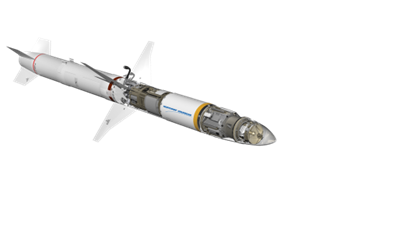F.L.
ACCESS: Top Secret
An interesting image of a Su-27 with AGM-88s.
View: https://x.com/front_ukrainian/status/1688167635857383425/photo/1
View: https://x.com/front_ukrainian/status/1688167635857383425/photo/1
Remember, HARM comes with its own launch pylon, and based on pictures in this thread that were posted after your comment it looks like the UkrAF has made a custom wing pylon that can attach to the wings of MiG29s and Su27s and has the appropriate lugs for that HARM pylon to attach to.So, Northrop Grumman has advertised a ground-launched containerized launcher for AARGM (advanced HARM) or AARGM-ER. It presumably needs a booster of some sort but it seems like a relatively easy modification, especially if they've already been studying it.

Northrop Grumman Shows Off Shipping Container-Launched Anti-Radiation Missile Concept
The idea pairs a standard ISO shipping container with the latest and greatest anti-radiation missile technology.www.thedrive.com
This seems more plausible than adapting it to air launch from MiG-29, which would mean adding at least a precision ESM system and NATO-style launch rails.

The Supersonic Air Launched Target (SALT) is a specially configured high-speed anti-radiation (HARM) missile system, that incorporates a modified Advanced Anti-Radiation Guided Missile (AARGM) Control Section, inert HARM AGM-88B Guidance Section (ballast), HARM Telemetry (TM)/Flight Termination System (FTS), and a HARM-B Rocket Motor. SALT provides an affordable air-launched supersonic target that will be used to test the effectiveness of shipboard air defense systems and warfighter training operations against a supersonic threat.
This apparently came up a few years ago, but I can't find a mention of it on this site. Turns out the Navy is converting old AGM-88s into AQM-88A single-use target drones called SALT (Supersonic Air-Launched Target).

I was pleasantly surprised to read about the AQM-88 when I reread the HARM wikipedia article recently, now I know Ukraine has the MALD but it has occurred to me that Ukraine could use AQM-88As as a decoy (With the inert seeker replaced by a suitable transponder) to flush out Russian SAM batteries for destruction once they're exposed.
Please stop with the constant litany of "Ukraine could use this weapon" in every damn topic. It is irritating. Lets just assume any weapon could be useful to Ukraine in some way, and that way you don't have to keep mentioning it.I was pleasantly surprised to read about the AQM-88A when I reread the HARM wikipedia article recently, now I know Ukraine has the MALD but it has occurred to me that Ukraine could use AQM-88As as a decoy (With the inert seeker replaced by a suitable transponder) to flush out Russian SAM batteries for destruction once they're exposed.
Edit: When I was checking Google for images of the AQM-88A I stumbled across this TWZ article on it from 2022:

AGM-88 Anti-Radiation Missiles Being Turned Into Aerial Targets By Navy
Converted AGM-88B missiles will help fill the gap left by the end of the career of the long-serving AQM-37 target drone.www.twz.com
Please stop with the constant litany of "Ukraine could use this weapon" in every damn topic. It is irritating. Lets just assume any weapon could be useful to Ukraine in some way, and that way you don't have to keep mentioning it.
